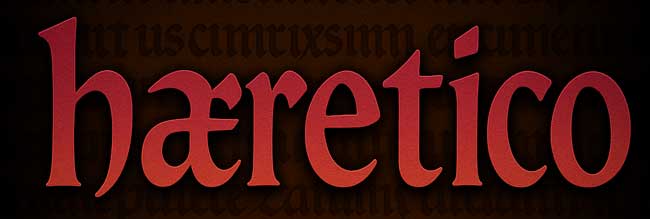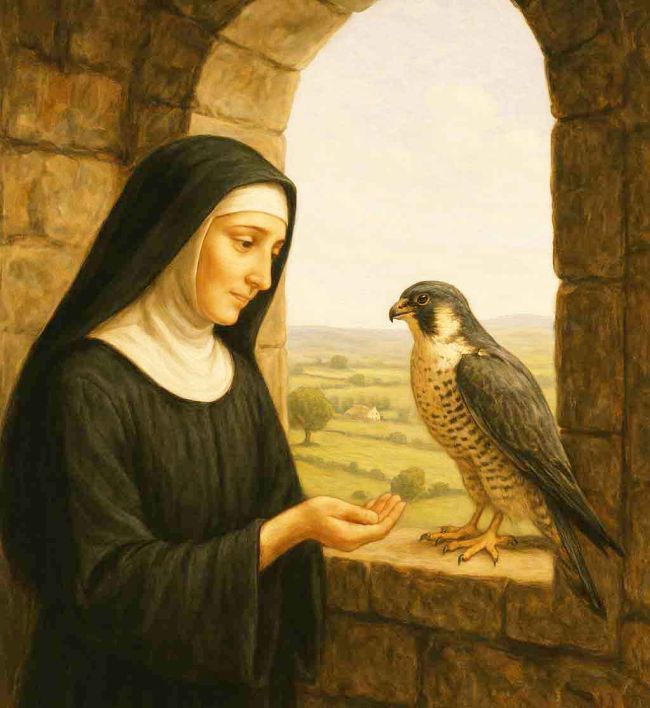Written by David Caldwell ·
Saint Brigid and the Festival of Imbolc: From Pagan Flame to Christian Cross
Every year, as January yields to February, a quiet but powerful celebration marks the turning of the season: Imbolc. For centuries, this Celtic festival welcomed the first signs of spring. It later became known as St. Brigid's Day, after the woman who bridged the worlds of goddess and saint, hearth and altar, earth and heaven. This article explores the layered history of Imbolc and its evolution through the story of Brigid, both goddess and saint.
Imbolc: The Festival of First Light
Imbolc, likely derived from the Old Irish "i mbolg" ("in the belly"), originally celebrated fertility, lambing, and the return of life to the frozen land. Held around February 1st, it was one of the four great quarter-day festivals of the Gaelic calendar, alongside Beltane, Lughnasadh, and Samhain.
It marked a time of agricultural anticipation and ritual purification. Druids observed the stars, lit sacred fires, and honoured the goddess Brigid, patron of fertility, healing, poetry, and the forge. Fires, wells, and crossroads were all part of the sacred landscape. Snowdrops were seen as symbols of her purity; flames represented her eternal inspiration.
Brigid: The Goddess Who Became a Saint
In the heart of Kildare, the legacy of Brigid took root both spiritually and architecturally. The double monastery she founded became a focal point of Irish Christianity. Known in ancient times as Cill Dara, or the Church of the Oak, the site was likely chosen due to its earlier sacred associations. The cathedral built upon its foundations was repeatedly targeted, plundered by Danes in the 9th century and burned in the 11th,yet it retained significance throughout the medieval period. In 1132, the abbess was forcibly removed by Leinster's king, highlighting the continued political importance of the site.
A prominent feature of the complex is the round tower, a stone structure traditionally used for bell-ringing and as a lookout or refuge. Though partially ruined, it still stands as a symbol of Brigid’s enduring presence. A spiral stair once led visitors to the summit, offering expansive views over the surrounding plains, a reminder of the monastery's once-great influence.
With the coming of Christianity, many pagan festivals were reinterpreted rather than erased. Brigid the goddess was transfigured into Saint Brigid of Kildare, a Christian abbess said to have been born at Faughart around 450 AD.
Daughter of a chieftain and slave, she refused marriage, founded a double monastery at Kildare, and became renowned for her acts of compassion and miracle-working. Stories say she hung her cloak over the land and it miraculously spread to cover acres. Others tell how she gave away her father's wealth to the poor, or that she converted a dying pagan chieftain by weaving a cross from rushes on his deathbed.
Kildare, the site of her monastery, was already sacred to the goddess Brigid. There, nuns tended a perpetual flame, echoing earlier fire cults. Her feast day, February 1st, coincides exactly with Imbolc, suggesting deliberate syncretism. Over time, Brigid became a national symbol of Ireland, honoured by kings and peasants alike.
Customs of Brigid's Day
Even in the 20th century, folk traditions survived:
- Brigid's Cross: Woven from rushes or straw and hung above doorways, it was believed to offer protection to the home and livestock.
- The Breedhoge (BrÃdeóg): A doll-like effigy of Brigid made by children and carried house to house in return for food or coins, echoing older fertility rites.
- Well Blessings: People visited holy wells dedicated to Brigid to collect blessed water or seek healing.
- The Brat BrÃde: A cloth left outside overnight to absorb Brigid’s blessing, later used as a healing charm.
These customs reflect deep continuity with pre-Christian rites: the worship of fire and water, seasonal transition, and feminine divinity.
A National Icon
Brigid is more than a saint; she is a living symbol of Irish identity. In the mid-20th century, her birthplace at Faughart became the site of national pilgrimages, with state and church figures alike attending. She was invoked not only as a holy woman but as a protector of the Irish people and a spiritual counterbalance to St. Patrick.
She remains a figure of peace, mercy, and resilience, an "emancipator of women," a guide for shepherds and bishops, and a potent emblem of the divine feminine.
Myths, Miracles, and Contested Legacies
Brigid’s enduring legacy cannot be fully understood without acknowledging the broader cultural strategy of Christian substitution. As highlighted in an 1886 article titled “Pagan and Christian Substitution,†the Church in both Italy and Ireland frequently absorbed pre-existing pagan sites, festivals, and deities by rebranding them with Christian meanings. The case of Brigid is perhaps the clearest example: a pagan goddess with an eternal flame at Kildare, served by priestesses, becomes St. Brigid, abbess of Kildare, with Christian nuns continuing to tend that same flame down to the reign of Henry VIII.
The sacred fire of Brigid, like the fire of Vesta in Rome, was kept alight for centuries by women alone. It was only in 1220 that Henry of London, Archbishop of Dublin, formally extinguished it. This fire had likely burned continuously for over fifteen hundred years, first as a pagan rite, then as a Christian tradition.
This process of religious substitution went beyond Brigid. Monasteries such as Iona were founded atop earlier druidic colleges. Wells dedicated to saints like Winifred or Mary often replaced sites once sacred to goddesses or water spirits. Even the Virgin Mary was in some ways a rebranded Isis, Cybele, or Ceres, transformed to meet the spiritual needs of the converted without erasing the familiar archetypes they cherished.
Such continuity made it difficult to draw a clear line between pagan and Christian practice in early Ireland. The Culdees, for example, were thought to be direct successors of druidic colleges, absorbed into the Church. This profound layering of belief means that many Irish traditions today, holy wells, sacred trees, even saintly festivals, carry the DNA of a much older spirituality.
Additional legends recorded by Gerald of Wales (Giraldus Cambrensis) in the 12th century reinforce Brigid’s sanctity and her central place in Irish Christianity. He notes that St. Brigid was buried in Kildare in the “odour of sanctity,†and that her remains were later moved alongside those of St. Patrick and St. Columba in a shared tomb in Down. An old inscription, likely from the 12th century, read:
In burgo Duno, tumulo tumulantur in uno / BrÃgidá, Patricius, atque Columba pius.
("In the town of Down, in one grave are buried / Brigid, Patrick, and holy Columba.")
This legend elevated her stature, placing her literally and symbolically alongside the greatest saints of Ireland.
Giraldus also described the perpetual flame of Kildare, maintained by Brigid’s nuns in a sanctuary near the abbey. The fire, enclosed within a hedge of stakes and brushwood, was never tended by men and was said to have burned undisturbed for centuries. According to one tale, a soldier attempting to blow on the fire with his breath went mad, and another who stepped over the hedge was lamed. These stories reflect both the sanctity and the protective danger associated with Brigid’s sacred traditions.
A final tale tells of a falcon that perched daily on the church tower in Kildare, regarded as Brigid’s bird, until it was accidentally shot by a rustic. This loss was seen as a bad omen, suggesting the fragility of blessings and the consequences of irreverence.
Intriguingly, some historical sources speak of two saints named Brigid, one a virgin maiden from Ireland or Scotland, the other a widow from Scandinavia (Sweden or Denmark). This raises the possibility that multiple traditions of female sanctity may have merged over time under the singular identity of Brigid.
The church of St. Bride’s in London, for example, was dedicated specifically to the virgin Brigid and preserved her flame, which was said to burn perpetually without fuel, reminiscent of the eternal fire kept by her nuns at Kildare. In Ireland, a tomb in Down was reputed to hold the bodies of St. Patrick, St. Columba, and St. Brigid, uniting the spiritual foundations of Irish Christianity in one sacred monument.
The Reformation disrupted many of these traditions. Brigid’s flame, if still burning, was extinguished during Henry VIII’s reign, and her inner sanctuary was demolished. The fires of religious zeal that followed, such as the burning of Protestants like John Worne in 1555, marked a new era in which older devotional figures, especially women, were either reframed or erased.
Brigid, however, survived not just in official canon but in the oral traditions, rural customs, and seasonal rhythms of the people. One evocative saying attributed to her reflects both reverence and sorrow: “The streets of Rome are paved with gold, and dyed red with the blood of the martyrs.†It is a vision at once poetic and political, connecting Brigid's voice to the broader Christian story of sacrifice and glory.
She remains a figure shrouded in layers: goddess, saint, legend, and living symbol.
Scholarly Revival and Enduring Name
The 19th century saw a renewed interest in Irish saints through historical and devotional literature. One such work, The Lives of Saint Columba and Saint Brigit by M. F. Cusack, highlighted Brigid's importance not only in religious terms but as a cultural icon. Described as “the recluse of Kildare,†Brigid was noted for her enduring popularity among Irish women, “a favourite… with the daughters of Erin.†Cusack’s writing, grounded in early sources like the Life of St. Columba by Adomnán, contributed to a modern revival of interest in Brigid as both legend and historical figure. Her name lived on not just in prayer and pilgrimage, but in generations of Irish women who bore it.
Imbolc and St. Brigid’s Day are not separate festivals, but one ancient tradition transformed by time. They celebrate renewal, light, and hope in the heart of winter. Whether we see Brigid as goddess, saint, or symbol, her flame continues to burn in the Irish imagination.
As February begins, perhaps we too can honour her legacy: with a rush cross, a candle in the window, or a quiet moment by a well, welcoming the spring that stirs beneath the snow.
Related Articles
12 October 2025
Queen of Heaven: From the Catacombs to the Reformation4 October 2025
The Ancient Blood: A History of the Vampire27 September 2025
Epona: The Horse Goddess in Britain and Beyond26 September 2025
Witchcraft is Priestcraft: Jane Wenham and the End of England’s Witches20 September 2025
The Origins of Easter: From Ishtar and Passover to Eggs and the Bunny12 September 2025
Saint Cuthbert: Life, Death & Legacy of Lindisfarne’s Saint7 September 2025
The Search for the Ark of the Covenant: From Egypt to Ethiopia5 September 2025
The Search for Camelot: Legend, Theories, and Evidence1 September 2025
The Hell Hound Legends of Britain25 August 2025
The Lore of the Unicorn - A Definitive Guide23 August 2025
Saint Edmund: King, Martyr, and the Making of a Cult14 August 2025
The Great Serpent of Sea and Lake11 August 2025
The Dog Days of Summer - meanings and origins24 June 2025
The Evolution of Guardian Angels19 June 2025
Dumnonia The Sea Kingdom of the West17 June 2025
The Roman Calendar, Timekeeping in Ancient Rome14 June 2025
Are There Only Male Angels?
